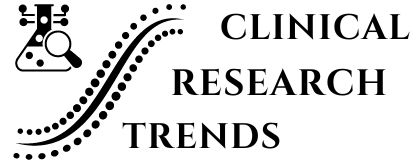Patient Recruitment Strategies in Clinical Trials
Patient recruitment is a critical component of clinical trials, serving as the foundation for successful research and development in the medical field. Effective recruitment strategies ensure that clinical studies are populated with a diverse and representative sample of participants, which is essential for generating reliable and generalizable results. Without adequate patient enrollment, trials can face delays, increased costs, and, in some cases, may be forced to terminate prematurely, potentially halting the development of promising new treatments.
However, recruiting patients for clinical research presents numerous challenges. These include identifying eligible participants, addressing their concerns about participation, and overcoming logistical barriers such as geographical limitations and time constraints. Additionally, there is the challenge of maintaining engagement and compliance throughout the trial, which can be difficult in long-term studies.
This blog aims to explore effective strategies for patient recruitment in clinical trials. We will examine the current challenges faced by researchers, discuss innovative approaches to overcome these obstacles, and highlight successful case studies. By understanding and implementing these strategies, clinical researchers can enhance their recruitment efforts, leading to more efficient and successful trials.
Understanding Patient Recruitment in Clinical Trials
Patient recruitment in clinical trials refers to the process of identifying, engaging, and enrolling suitable participants to take part in a clinical study. This phase is crucial as it directly impacts the trial's validity and success. A well-executed recruitment plan ensures a sufficient number of participants, which is necessary for achieving statistical significance and reliable results. Moreover, it facilitates a diverse participant pool, allowing the findings to be applicable to a broader population.
The significance of patient recruitment cannot be overstated. Effective recruitment strategies contribute to shorter trial durations, reduced costs, and timely development of new therapies. Conversely, poor recruitment can lead to prolonged studies, escalated expenses, and potential failure of the trial, delaying access to potentially life-saving treatments for patients in need.
Historical Context: Traditional vs. Modern Recruitment Methods
Historically, patient recruitment relied heavily on traditional methods such as physician referrals, advertisements in newspapers and magazines, and word-of-mouth within medical communities. These methods, while effective to some extent, often resulted in limited reach and a lack of diversity among participants.
With the advent of technology, modern recruitment methods have significantly evolved. Digital platforms, social media, and online patient registries have revolutionized how researchers connect with potential participants. These tools allow for broader outreach, targeting specific demographics, and providing more information to prospective participants, thereby improving enrollment rates and participant diversity. Additionally, electronic health records (EHRs) and data analytics enable researchers to identify and approach eligible participants more efficiently.
Key Metrics for Evaluating Recruitment Success
Evaluating the success of patient recruitment efforts involves several key metrics:
- Enrollment Rates: This metric measures the number of participants who consent to join the trial within a specified timeframe. High enrollment rates indicate effective recruitment strategies and strong participant interest.
- Retention Rates: Retention rates reflect the percentage of participants who remain in the study until its completion. High retention rates are crucial for maintaining the integrity of the trial's data and ensuring reliable results.
- Screening-to-Enrollment Ratio: This ratio assesses the efficiency of the screening process by comparing the number of participants screened to those who are ultimately enrolled. A lower ratio suggests a more targeted and effective recruitment strategy.
- Time to Enrollment Completion: This metric tracks the duration from the start of the recruitment process to the point where the required number of participants is enrolled. Shorter times indicate more efficient recruitment efforts.
- Cost per Enrolled Participant: This metric evaluates the financial efficiency of recruitment strategies by dividing the total recruitment costs by the number of participants enrolled. Lower costs per participant reflect more cost-effective recruitment methods.
By understanding these metrics, researchers can refine their recruitment strategies, ensuring they meet enrollment targets while maintaining cost-efficiency and participant diversity. In the next section, we will delve into the specific challenges faced in recruiting patients for clinical research and explore innovative solutions to overcome these hurdles.
Common Challenges in Patient Recruitment
Awareness and Education
One of the most significant barriers to effective patient recruitment is the lack of awareness and understanding about clinical trials among potential participants. Many individuals are simply unaware that clinical trials are an option available to them, leading to missed opportunities for participation. This issue is exacerbated by limited outreach and education efforts, which often fail to reach a broad audience.
Even when individuals are aware of clinical trials, misconceptions and fears about participation can deter them from enrolling. Common concerns include the fear of receiving a placebo instead of active treatment, worries about potential side effects, and general skepticism about the safety and efficacy of experimental therapies. These misconceptions can be rooted in a lack of accurate information and understanding about the clinical trial process, underscoring the need for robust educational initiatives to demystify clinical research.
Logistical and Accessibility Issues
Logistical challenges also play a significant role in hindering patient recruitment. Geographic barriers, for instance, can prevent individuals from participating in trials conducted far from their homes. Transportation difficulties, especially for those living in rural or underserved areas, can make it impractical for potential participants to travel to study sites regularly.
Time commitment and scheduling conflicts present another layer of difficulty. Many clinical trials require frequent visits to the study site, which can be challenging for participants who have work, family, or other obligations. The need to take time off from work, arrange childcare, or manage other commitments can discourage individuals from enrolling in or continuing with a trial.
Demographic and Socioeconomic Barriers
The underrepresentation of diverse populations in clinical trials is a long-standing issue that impacts the generalizability of study results. Diverse populations, including ethnic minorities, the elderly, and those with various socioeconomic backgrounds, are often underrepresented in clinical research. This lack of diversity can lead to a gap in understanding how different populations respond to new treatments, potentially resulting in less effective healthcare solutions for these groups.
Socioeconomic factors also influence participation in clinical trials. Individuals from lower socioeconomic backgrounds may face additional barriers, such as limited access to healthcare facilities, lack of insurance, and financial constraints. These factors can make it difficult for them to participate in and adhere to the requirements of a clinical trial. Additionally, cultural and language barriers can further complicate recruitment efforts, making it essential for researchers to develop culturally sensitive and inclusive recruitment strategies.
Effective Patient Recruitment Strategies
Community Engagement and Outreach
One of the most effective ways to enhance patient recruitment is through active community engagement and outreach. Partnering with community organizations and advocacy groups can significantly extend the reach of recruitment efforts. These partnerships help build trust within communities and ensure that information about clinical trials is disseminated through trusted sources. Community organizations often have established relationships with potential participants and can provide valuable insights into their concerns and motivations.
Conducting educational seminars and workshops is another powerful tool for raising awareness about clinical trials. These events provide an opportunity to address misconceptions, answer questions, and explain the potential benefits of participating in clinical research. By creating an open dialogue and providing clear, accurate information, researchers can foster a greater understanding and interest in clinical trials within the community.
Digital and Online Recruitment
The rise of digital and online platforms has revolutionized patient recruitment strategies. Utilizing social media platforms for targeted recruitment campaigns allows researchers to reach specific demographics and geographic areas efficiently. Social media ads can be tailored to attract potential participants based on their interests, health conditions, and other relevant factors, increasing the likelihood of successful enrollment.
Online patient registries and recruitment websites serve as valuable resources for connecting with potential participants. These platforms enable individuals to learn about ongoing clinical trials, determine their eligibility, and express interest in participating. By providing an easily accessible and user-friendly interface, these digital tools make it simpler for individuals to get involved in clinical research.
Healthcare Provider Partnerships
Collaborating with healthcare providers is a critical component of effective patient recruitment. Primary care physicians and specialists are often the first point of contact for patients considering clinical trial participation. By building strong partnerships with these healthcare providers, researchers can tap into their existing patient networks and enhance recruitment efforts.
Training healthcare providers to identify and refer eligible patients is essential for maximizing this strategy's effectiveness. Providing physicians with the necessary resources and information about ongoing trials can help them confidently discuss potential participation with their patients. Additionally, integrating clinical trial information into routine patient care can normalize the idea of participation, making it a standard part of treatment discussions.
Patient Referral Programs
Patient referral programs can significantly boost recruitment efforts by leveraging the power of personal recommendations. Implementing referral incentives for existing participants encourages current trial members to recommend the study to friends, family, or acquaintances who may be eligible. This word-of-mouth approach often resonates more with potential participants, as they are hearing about the trial from a trusted source.
Creating networks of referring physicians and healthcare professionals also enhances patient recruitment. By establishing a formal referral network, researchers can ensure a steady flow of potential participants from various healthcare providers. Regular communication and updates about the trial's progress and needs can keep these referral networks engaged and motivated to contribute to recruitment efforts.
Technology-Driven Recruitment Approaches
Mobile Health Applications
Mobile health applications have emerged as a powerful tool for patient recruitment, engagement, and communication. These apps can be used to reach potential participants through their smartphones, providing a convenient and accessible way to disseminate information about clinical trials. By using apps, researchers can create interactive and engaging content that explains the trial's purpose, procedures, and benefits, making it easier for individuals to understand and consider participation.
One of the key features of mobile health applications is the ability to send push notifications. These notifications can be used to remind potential participants about upcoming trial deadlines, provide updates on the trial's progress, and send motivational messages to encourage continued participation. Additionally, apps can facilitate two-way communication between researchers and participants, allowing for quick responses to questions and concerns, which can help maintain engagement and compliance throughout the trial.
Wearable Devices and Remote Monitoring
Wearable devices, such as fitness trackers and smartwatches, offer a unique opportunity for patient recruitment by providing continuous health monitoring. These devices can collect a wealth of health data, which researchers can use to identify potential participants who meet the study's criteria. For example, wearables can track vital signs, physical activity levels, and sleep patterns, providing valuable insights into an individual's health status.
The benefits of continuous health monitoring extend beyond recruitment. Once participants are enrolled, wearables can help track their health metrics throughout the trial, providing real-time data that can enhance the study's accuracy and reliability. Remote monitoring also reduces the burden on participants, as it minimizes the need for frequent in-person visits to the study site. This convenience can increase participant retention and adherence to the trial protocol.
Artificial Intelligence and Big Data
Artificial intelligence (AI) and big data are transforming patient recruitment by enabling more precise and efficient identification of eligible candidates. AI-driven algorithms can analyze vast amounts of health data, including electronic health records, genetic information, and social determinants of health, to identify individuals who match the study's inclusion criteria. These algorithms can also predict which individuals are most likely to participate and remain engaged in the trial, allowing researchers to focus their recruitment efforts on the most promising candidates.
Big data analysis can further enhance recruitment by targeting specific populations. By examining demographic, geographic, and health-related data, researchers can identify underrepresented groups and tailor their recruitment strategies to address the unique barriers these populations face. For instance, big data can reveal trends in health disparities, guiding researchers to develop culturally sensitive and inclusive outreach efforts.
Personalized Recruitment Strategies
Tailored Communication and Messaging
One of the most effective ways to enhance patient recruitment is through tailored communication and messaging. By customizing messages based on patient demographics and preferences, researchers can create more relevant and compelling content that resonates with potential participants. This personalized approach can significantly increase engagement and interest in the clinical trial.
Customizing messages involves understanding the specific concerns and motivations of different demographic groups. For example, younger participants might be more motivated by the opportunity to contribute to scientific advancements and access cutting-edge treatments, while older individuals might be more concerned about the potential risks and side effects. By addressing these specific concerns and highlighting relevant benefits, researchers can create targeted messages that appeal to the unique needs and preferences of each group.
Patient-Centric Approaches
Adopting patient-centric approaches in recruitment strategies can lead to more successful and sustainable enrollment. Involving patients in the recruitment process design ensures that the strategies developed are relevant and considerate of the participant's perspective. Patients can provide valuable insights into their preferences, concerns, and barriers to participation, helping researchers design more effective recruitment campaigns.
Providing clear and accessible information about the trial is another critical aspect of patient-centric recruitment. Potential participants need to understand what the trial entails, including the purpose, procedures, potential risks, and benefits. Transparent communication helps build trust and confidence, making individuals more likely to consider participating. Additionally, using plain language and avoiding medical jargon can make the information more accessible to a broader audience.
Incorporating patient feedback into the recruitment process can also improve engagement. By actively listening to and addressing participant concerns, researchers can make necessary adjustments to the recruitment strategy, ensuring it aligns with the needs and expectations of the target population. This collaborative approach fosters a sense of partnership and investment in the trial's success.
Case Studies and Examples of Successful Recruitment Strategies
In the following sections, we will explore case studies and examples of successful patient recruitment strategies in clinical trials. These real-world applications highlight best practices and lessons learned, providing valuable insights into how researchers can overcome common recruitment challenges and achieve their enrollment goals.
Case Study 1: Leveraging Social Media for Recruitment
One successful example of digital recruitment involved a clinical trial for a new diabetes treatment. The researchers utilized social media platforms to launch targeted ad campaigns aimed at individuals with diabetes. By using specific keywords and demographic filters, they were able to reach a highly relevant audience. The campaign included educational content, patient testimonials, and direct links to the trial registration page. As a result, the trial saw a significant increase in enrollment rates and participant diversity.
Case Study 2: Community-Based Recruitment for Rare Diseases
In a trial focusing on a rare genetic disorder, researchers partnered with patient advocacy groups and local community organizations to raise awareness about the study. They conducted educational seminars and workshops to provide detailed information about the trial and its potential benefits. Additionally, they offered transportation assistance and flexible scheduling to accommodate participants' needs. This community-based approach not only improved recruitment rates but also fostered strong relationships with the patient community, enhancing overall trial engagement.
Case Study 3: Utilizing Wearables for Cardiology Trials
A cardiology clinical trial successfully incorporated wearable devices to identify and recruit potential participants. The researchers collaborated with a popular wearable device manufacturer to access anonymized health data, such as heart rate and physical activity levels. By analyzing this data, they identified individuals who met the study's eligibility criteria and sent personalized invitations to participate. This innovative approach streamlined the recruitment process and ensured that the trial enrolled participants who were most likely to benefit from the study.
Enhancing Recruitment Through Incentives and Support
Financial Incentives and Compensation
Financial incentives and compensation can play a crucial role in enhancing patient recruitment for clinical trials. Offering stipends or compensation for participants' time and travel expenses acknowledges the commitment and effort required to participate in a trial. This approach can make participation more feasible for individuals who might otherwise be unable to join due to financial constraints.
However, it is essential to navigate the ethical considerations and regulatory guidelines associated with financial incentives. Compensation should be fair and not coercive, ensuring that participants' decisions to join a trial are based on informed consent rather than financial necessity. Researchers must adhere to guidelines set by ethical review boards and regulatory bodies to ensure that incentives are appropriate and transparent. By balancing these factors, financial incentives can effectively support recruitment efforts without compromising ethical standards.
Support Services
Providing comprehensive support services can significantly improve patient recruitment and retention in clinical trials. Many potential participants face logistical and practical barriers that make it difficult for them to join and remain in a study. By addressing these challenges, researchers can create a more participant-friendly environment that encourages enrollment and sustained involvement.
Transportation Assistance: Offering transportation services can help overcome geographic barriers, making it easier for participants to travel to and from the study site. This support is particularly important for individuals living in rural or underserved areas where public transportation options may be limited.
Childcare Services: For participants with young children, arranging childcare can alleviate the burden of finding and affording care during study visits. Providing on-site childcare or covering the costs of professional childcare services can make participation more accessible for parents and caregivers.
Flexible Scheduling: Allowing flexible scheduling options can help accommodate participants' work, family, and personal commitments. Offering evening and weekend appointments, as well as the possibility of remote visits when feasible, can reduce the time and effort required for participants to attend study-related activities.
Comprehensive Support: Ensuring that participants receive comprehensive support throughout the trial is crucial for maintaining engagement and compliance. This support can include regular check-ins, clear communication about study progress, and addressing any concerns or issues that arise during the trial. Providing a dedicated point of contact for participants can enhance their experience and foster a sense of trust and partnership.
Measuring and Optimizing Recruitment Efforts
Tracking Recruitment Metrics
To ensure the success of patient recruitment strategies, it is essential to track key performance indicators (KPIs) and continuously monitor recruitment data. These metrics provide valuable insights into the effectiveness of recruitment efforts and highlight areas for improvement. Some of the critical KPIs for assessing recruitment success include:
- Enrollment Rates: The number of participants enrolled over a specific period. High enrollment rates indicate effective recruitment strategies and strong participant interest.
- Retention Rates: The percentage of participants who remain in the study until its completion. High retention rates are crucial for maintaining the integrity of the trial’s data.
- Screening-to-Enrollment Ratio: The ratio of participants screened to those who are ultimately enrolled. A lower ratio suggests a more targeted and efficient recruitment process.
- Time to Enrollment Completion: The duration from the start of recruitment to the point where the required number of participants is enrolled. Shorter times indicate more efficient recruitment efforts.
- Cost per Enrolled Participant: The total recruitment costs divided by the number of participants enrolled. Lower costs per participant reflect more cost-effective recruitment strategies.
Regularly monitoring these KPIs allows researchers to identify trends, measure progress, and make data-driven decisions to enhance recruitment efforts. By analyzing recruitment data in real time, researchers can promptly address issues and adapt their strategies to ensure successful participant enrollment.
Continuous Improvement
Continuous improvement is vital for optimizing patient recruitment efforts. By gathering feedback from participants and refining strategies, researchers can create more effective and participant-friendly recruitment processes. Implementing lessons learned from past recruitment efforts is key to evolving and improving over time.
Gathering Participant Feedback: Regularly collecting feedback from participants helps researchers understand their experiences, preferences, and challenges. This feedback can be obtained through surveys, interviews, or focus groups. Insights gained from participant feedback can inform adjustments to recruitment materials, communication strategies, and support services, ensuring they better meet the needs and expectations of potential participants.
Refining Strategies: Based on the feedback and recruitment data, researchers can refine their strategies to enhance recruitment efforts. This may involve updating educational materials, adjusting outreach methods, or implementing new technologies to streamline the recruitment process. Continuous evaluation and iteration of recruitment strategies help maintain their effectiveness and relevance.
Implementing Lessons Learned: Learning from past recruitment efforts is crucial for continuous improvement. Researchers should document the successes and challenges encountered in previous trials, identifying best practices and areas for enhancement. By applying these lessons learned to future recruitment campaigns, researchers can build on their successes and avoid repeating past mistakes.
Collaborative Improvement: Engaging with other researchers, healthcare providers, and industry experts can provide additional insights and perspectives on effective recruitment strategies. Sharing experiences and best practices within the research community fosters a collaborative environment for continuous improvement.
Case Studies and Success Stories
Effective patient recruitment strategies are not only theoretical but have been successfully implemented in various clinical trials. Here, we highlight several case studies and success stories that demonstrate the practical application and impact of these strategies, including a notable example from Notable Labs.
Case Study 1: Community-Based Recruitment for a Chronic Disease Trial
In a clinical trial aimed at developing a new treatment for Type 2 diabetes, researchers partnered with local community organizations and advocacy groups to enhance recruitment efforts. They conducted educational seminars and workshops in community centers, churches, and schools to raise awareness about the trial and its potential benefits.
The researchers also offered transportation assistance and flexible scheduling to accommodate participants' needs. This community-based approach led to a significant increase in enrollment rates and ensured a diverse participant pool that was representative of the broader population affected by the disease. The strong relationships built with community leaders and organizations also fostered trust and engagement, contributing to high retention rates throughout the trial.
Case Study 2: Digital Recruitment Strategies for a Rare Disease Study
A clinical trial for a new treatment for a rare genetic disorder utilized digital recruitment strategies to reach potential participants globally. The researchers leveraged social media platforms, online patient registries, and targeted digital advertising campaigns to identify and engage individuals with the specific genetic mutation required for the study.
By using data analytics and AI-driven algorithms, the team was able to target ads to individuals who had expressed interest in rare disease research and genetic testing. The digital campaign included educational content, patient testimonials, and easy access to pre-screening questionnaires. This approach not only increased awareness but also streamlined the recruitment process, resulting in a faster enrollment period and a highly engaged participant pool.
Case Study 3: Healthcare Provider Partnerships in Oncology Trials
In an oncology clinical trial focused on a novel cancer treatment, researchers collaborated closely with primary care physicians and oncology specialists to enhance patient recruitment. They provided training sessions for healthcare providers to educate them about the trial's eligibility criteria, benefits, and procedures.
The researchers also developed a referral program that incentivized healthcare providers to refer eligible patients. This collaboration ensured that patients received information about the trial from trusted medical professionals, which significantly increased the credibility and acceptance of the trial. The referral network established through this partnership led to a steady flow of eligible participants, contributing to the trial's timely completion and robust data collection.
Case Study 4: Notable Labs' Precision Medicine Trial
Notable Labs implemented an innovative recruitment strategy for their precision medicine trial focused on a new cancer treatment. Recognizing the challenges of recruiting participants with specific genetic profiles, Notable Labs utilized a combination of community engagement, digital tools, and healthcare provider partnerships.
They collaborated with patient advocacy groups and conducted informational webinars to educate potential participants and their families about the trial. Additionally, Notable Labs used social media platforms to launch targeted ad campaigns, reaching individuals based on their genetic testing histories and interests in precision medicine.
Notable Labs also partnered with leading oncology centers and specialists, providing them with detailed information about the trial and encouraging patient referrals. To support participants, Notable Labs offered comprehensive services, including transportation assistance and flexible visit schedules. This multifaceted approach resulted in high enrollment rates, diverse participant representation, and strong retention throughout the trial, demonstrating the effectiveness of their recruitment strategy.
Recap of the importance of effective patient recruitment strategies
Effective patient recruitment is the cornerstone of successful clinical trials. It ensures that trials are completed on time, within budget, and with sufficient data to draw meaningful conclusions. High-quality recruitment strategies lead to diverse participant pools, which are essential for the generalizability and reliability of trial outcomes. By addressing the unique challenges and barriers to participation, researchers can enhance the recruitment process, ultimately accelerating the development of new and effective treatments.
The case studies and examples provided in this blog underscore the need for innovative and patient-centric recruitment methods. By leveraging community engagement, digital tools, healthcare provider partnerships, personalized communication, and robust support services, researchers can create more effective and inclusive recruitment strategies. Embracing these approaches not only improves enrollment rates but also fosters trust and engagement among participants, leading to better retention and compliance throughout the trial.
The future of patient recruitment in clinical research is poised to be dynamic and transformative. As technology continues to advance, new tools and platforms will emerge, offering even more sophisticated ways to connect with potential participants. Artificial intelligence, big data analytics, and mobile health applications will play increasingly prominent roles in identifying and engaging eligible candidates. Moreover, the growing emphasis on patient-centric approaches will ensure that recruitment strategies are not only effective but also ethical and respectful of participants' needs and preferences.
Researchers are encouraged to implement diverse recruitment strategies, drawing on the best practices and lessons learned from successful campaigns. By adopting a multifaceted approach, they can address the various challenges of patient recruitment and create a more inclusive and effective research environment.
As we look to the future, it is vital to foster a collaborative and open dialogue within the research community. Researchers, healthcare providers, and participants alike are invited to share their experiences, insights, and feedback on patient recruitment. By learning from one another and continually refining our approaches, we can collectively enhance the recruitment process and advance the field of clinical research.
We encourage readers to share their thoughts and experiences with patient recruitment. What strategies have you found most effective? What challenges have you encountered, and how have you overcome them? Your feedback and discussions are invaluable as we strive to improve patient recruitment and contribute to the development of new and innovative treatments.










Join Our New Letter










